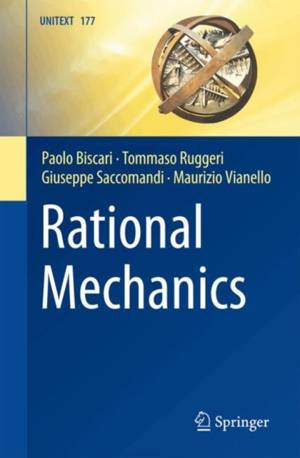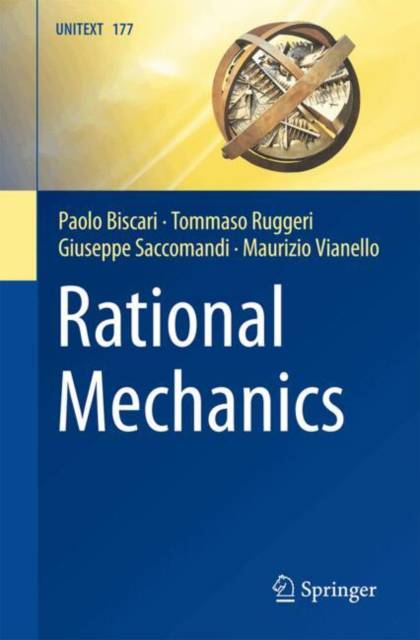
- Afhalen na 1 uur in een winkel met voorraad
- Gratis thuislevering in België vanaf € 30
- Ruim aanbod met 7 miljoen producten
- Afhalen na 1 uur in een winkel met voorraad
- Gratis thuislevering in België vanaf € 30
- Ruim aanbod met 7 miljoen producten
Zoeken
€ 107,45
+ 214 punten
Omschrijving
This book pursues a twofold objective: to introduce the methodologies of Italian Rational Mechanics to an international audience hoping they may prove valuable to teachers and students in Engineering, Physics, and Mathematics and to offer essential material for engineering students in Italy whose courses are taught in English. Readers are expected to have a background in Calculus and Linear Algebra, along with a basic familiarity with the fundamental principles of Newtonian Mechanics. Rational Mechanics is a mathematical discipline that spans from Newtonian to analytical and applied mechanics. It follows a rigorous deductive approach and has traditionally provided a foundational framework that bridges mathematics, physics, and engineering. This book builds on the long-standing Italian tradition of teaching Rational Mechanics at the undergraduate level. It is particularly well suited for courses that guide students from first principles to progressively more advanced topics, culminating in the sophisticated modeling of real-world phenomena. Historically, Rational Mechanics has often been the first course in which students of Engineering, Physics, or Mathematics encounter a rigorous and comprehensive framework for mathematical modeling, making its educational value especially significant. The presentation of fundamental concepts is consistently oriented toward applications, with the aim of fostering synergies in teaching, particularly in interdisciplinary contexts. The structure of the book reflects this approach, with special emphasis on sections that are often treated in a more abstract way such as constraints, the Principle of Virtual Work, d Alembert s Principle, and Analytical Mechanics.
Specificaties
Betrokkenen
- Auteur(s):
- Vertaler(s):
- Uitgeverij:
Inhoud
- Aantal bladzijden:
- 492
- Taal:
- Engels
- Reeks:
- Reeksnummer:
- nr. 177
Eigenschappen
- Productcode (EAN):
- 9783032074614
- Verschijningsdatum:
- 16/01/2026
- Uitvoering:
- Paperback
- Formaat:
- Trade paperback (VS)
- Afmetingen:
- 155 mm x 235 mm

Alleen bij Standaard Boekhandel
+ 214 punten op je klantenkaart van Standaard Boekhandel
Beoordelingen
We publiceren alleen reviews die voldoen aan de voorwaarden voor reviews. Bekijk onze voorwaarden voor reviews.








